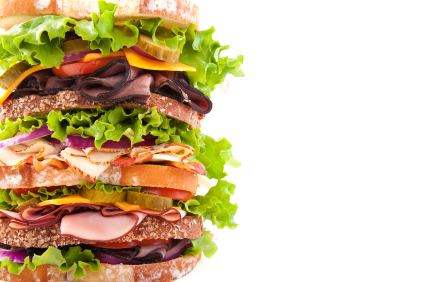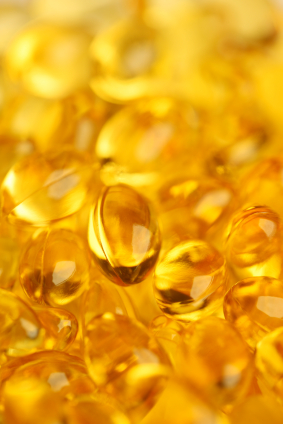Friday Folly: Does your romantic life need a spicy boost?!
Ever since I first subscribed to Birchbox, I’ve been intrigued by monthly subscription services. I’ve given gifts of Bespoke to the favourite men in my life and ConciousBox to my health and eco savvy friends. Everyone who has received the monthly surprises in these boxes has been delighted. So, I am delighted to see that subscriptions have also moved into the boudoir.
I stumbled across SpicySubscriptions yesterday afternoon when I was taking a break from an otherwise hectic day. And, I love the idea of a gift of love to one who deserves it most: you.
I’ve not tried the Spice Box, but the idea is simple: monthly deliveries of lubricants, condoms, massage oils, candles, fragrances, sexual educational books, games, costumes, toys and lingerie to take the spice out of the kitchen and into the bedroom.
Sex during menopause can be challenging; women often have to deal with issues of vaginal dryness, a lack of desire or fatigue, all elements that can lead to sexual dysfunction. Not all of these problems can be conquered by a few toys or lubricant, but boy, oh, boy, shaking up the trees a bit sure can change one’s perspective and perhaps restore some of that lost luster.
I’ve not personally tried SpicySubscriptions so I cannot vouch for the quality of the products nor the company itself. However, I would gladly sign up for the ‘toy of the month’ or ‘spice box’ subscription just as I have signed up for BirchBox.
What do you think? Is Spice Box worth a Friday Fling?
Read MoreWednesday Bubble: When it comes to bone health, D is for “don’t bother”
Conventional wisdom suggests that combining calcium with vitamin D improves calcium absorption, and therefore may help prevent fractures resulting from bone loss and the body’s inability to replace bone. Notably, in younger people, the body works efficiently to replace bone after it breaks it down. However, after the age of 30, women begin lose bone mass and as I’ve written time and again in Flashfree, by the time we hit menopause, this process speeds ups, resulting in osteopenia and of course, osteoporosis.
And yet, researchers are now saying that they’ve confirmed that while calcium supplementation (1,200 mg daily) may reduce bone turnover and by default, improve overall bone health, adding vitamin D offers no additional advantage unless a woman has an existing vitamin D deficiency. In this recent study of 159 menopausal women, they compared vitamin D and calcium to calcium alone to vitamin D alone to placebo. They then measured a marker of bone turnover in the blood — PTH, or parathyroid hormone — over a period of six months.
Not surprisingly, they found that when they compared the women taking daily calcium to those who obtained calcium naturally in their diet, calcium was a clear winner, resulting in a significant reduction in bone turnover. However, when vitamin D was added to daily calcium, it did not seem to add any benefit (although it also did no harm).
No harm, no foul?
Not quite. The researchers say that too much calcium is too much of a good thing and that calcium balance is critical. The addition of vitamin D may lead to a condition called hypercalciuria — excessive calcium in the blood — which over time, can impair kidneys. The best practice is a cautious one; consult your practitioner to learn what your calcium levels are and proceed from there. If s/he recommends supplementing natural dietary intake of calcium with supplements, then you are good to go. However, when it comes to D and bone health? Maybe don’t!
In the interim, if you are interested in learning more about calcium do’s and don’ts, the archives hold a wealth of information. Check these posts out!
Read MoreGuyside. As advertised on TV: selling men short
It’s perhaps the easiest thing in the world to criticize TV advertising. Everybody sees an ad and find it puerile, stupid, offensive, or something. And there’s no doubt that women have been very poorly treated by all sorts of ads in the past and now, too. Objectified, used purely for their sexuality, portrayed as stupid — there’s a legendary description of advertising as “Two Cs in a K.” The K stands for kitchen; I’ll let you figure out what the C stands for.
But it ain’t so great for men either, out there. My personal favorite ads? Just for Men. Oh, Just For Men, how you sell men short. I’m divided over which of their campaigns is more patronizing and offensive: the one with two adorable daughters telling their dad “it’s time”:
The inexplicable “Beard Baby” ad:
Or the one with three retired athletes humiliating themselves in front of bimbos:
It’s not just hair commercials for older dudes. It’s razor commercials, and even commercials aimed at younger guys (AXE, anyone?). I wouldn’t even call it subliminal — it’s quite clear that for advertising aimed at men, the message is: “Use our product, get laid.” That makes very good sense… if you’re advertising an erectile dysfunction drug.
What bugs me about the advertising aimed at me is that the only reason for exercise, for grooming, or other products or services aimed at men, is heterosexual sex. Don’t get me wrong — I’m in pro-heterosexual sex. I just think (a) there’s more to the world than just a man and a woman having sex; and (b) there are more motivating factors in the world than that.
As a man, my frustration with ads targetting me makes me think about the ads targetting other demographic segments. I don’t doubt that other groups are as poorly served by TV ads aimed at them as men are by ads for “men’s products.” And so it’s no wonder that there’s so much kibitzing, good-natured and otherwise, about the poor job these ads do to communicate their messages.
Think of the difference between this razor commercial:
And this one:
To me, the difference is one of tone. One is cynical, relying on the brain-penis connection. The other is smart and self-referential, acknowledging that this really is just body wash, after all.
The success of the Old Spice ad campaign was phenomenal. But we need to continue to teach advertisers that men are more than leering adolescents, and that when you make ads like these, you sell men — and women — short.
Read MoreWednesday Bubble: Stories from the Sandwich Generation
I have long heard the term ‘Sandwich Generation’ tossed around as if it’s something that those of us who are in our fifties can’t escape. Indeed, women and men between the ages of 45 and 55, the generation I have always referred to as the Tailgaters (not quite Boomers but at the tail end) are increasingly finding themselves in a financial pickle as they try to navigate college tuition, aging parents who may need financial assistance and their own retirement. However, when I step back from the classic definition and remove the top layer, what I really see is an aspect of being part of the Sandwich that many people disregard: emotions.
In an interesting piece that ran in yesterday’s New York Times, journalist Jane Brody writes “moral obligations to assist one’s aging parents are commonly felt. They can leave adult children feeling overburdened and neglectful of their own families, personal needs and goals. Indeed, The New York Times for several years has devoted a blog entirely to this subject, The New Old Age.”
There it is; not only are we being pulled in various financial directions but we are also wedged between the emotional needs of ourselves, our family and our parents’.
How do you navigate this path successfully, without succumbing to emotional exhaustion? And when is it okay to step back and take a day to regroup and reenergize in the midst of a crisis? When is the deck so stacked that one wrong move can cause the entire sandwich to spill over onto the plate of life?
Earlier this year, I reported on findings from a nine-year study in almost 200 midlife women (ages 49 to 53) that supported what we all inherently know; this emotional burden may skew towards women in many cases and recovery for some, especially those who experience high levels of burnout, may be slow. The most important factors that promote a slow recovery include concurrent changes in life stress, work-related factors and coping ability/attitudes towards life. When women were divided into clusters reflecting patterns of burnout, the researchers found that high levels of life stress (e.g. concern for ailing parents, or concern for own health or their partner), coupled with a greater sensitivity to stress and job strain was a recipe for prolonged, worsening burnout. Women who had high levels of life stress but more control over their work environment were able to recover from burnout over time. Conversely, women with low levels of life stress, susceptibility to stress, anxiety and high levels of coping and a sense of control didn’t appear to be dealing with much burnout; the ability to draw on internal resources appeared to be protective in across a broad range of wellbeing indices.
I am in the midst of my own sandwich right now, balancing aging parents requiring medical and emotional attention with work with finances with a search for a new home. I am a burnout poster child for countless others who find themselves feeling helpless as they try to decide whether mustard or mayo will somehow make it all a bit more palatable.
Analogies aside, I would love to hear your personal story, the pathways you’ve engaged to find joy in the midst of an unbalanced life, the strategies you’ve used to redefine your role in the Sandwich that is life and aging parents and family and health and finances.
Where are you? And where do you want to be.
I want to hear from you my fellow Sandwichers. Share your recipe for regaining your power and balance, your tricks of the trade, your trials and tribulations, your journey navigating your way to happy. Post a comment below or write to me at flashfree111@gmail.com. Who knows? We may have a series in the making.
Read More
MsFLASH and omega-3s
In early August, I posted two pieces about MsFLASH –Menopause Strategies: Finding Lasting Answers for Symptoms and Health — a network of studies evaluating potentially promising treatments for common menopausal symptoms. Started by the National Institutes of Health, MsFLASH comprises five research centers in Boston, Oakland, Philadelphia, Seattle and Indianapolis who are exploring various interventions for hot flashes, night sweats, mood disorders and sexual issues.
One of these trials set out to evaluate the role of omega-3 fatty acids in menopause, more specifically, whether or not omega-3s would be useful for alleviating hot flashes in women who prefer alternative strategies. Although the benefits of omega-3s are widespread, researchers have not been able to prove that they work against hot flashes. Consequently, over three months, 346 women took either three omega-3 capsules or placebo daily in addition to yoga, aerobics or usual activity. The women reported having roughly 8 hot flashes a day at the start of the study.
Unfortunately, the verdict is still out. Taking omega-3s appeared to have little effect on hot flash frequency or bother; declines in both measures were similar among women whether they were taking the fish oil or placebo (an average 35% decline in both groups and in both variables). What’s more, taking daily fish oil supplements didn’t appear to help sleep or mood. Personally, I find the lack of effect on mood surprising since there are data showing a benefit on depression, especially when it comes to DHA. However, even the researchers acknowledge that the lack of effect here might be due to the degree of depressive or anxiety symptoms that the women in this study experienced.
Regardless, if you are taking fish oils and have seen an improvement in symptoms, I would love to hear from you. Do they help? The search for the magic bullet for hot flashes continues but in the meantime, the more we share, the more we collectively know.
Read More
Got Low T? Low E? What?!!!
Do you recall the Low T campaign, you know, the one where Daryl Moose Johnston is able to ‘get back in the game’ once he starts correcting his testosterone deficiency? Well, not only is Darryl suffering from low testosterone levels but newly published research suggests that men like Darryl may also be suffering from ‘Low E,’ as in estrogen. Can you hear the ‘cha ching’ in the background yet?
As researchers continue to unravel the mysteries of how declining testosterone affects men, they’ve discovered that testosterone has a partner in crime: estrogen. In fact, not only does it appear that different men need different levels of testosterone in their body to maintain their lean/fat mass balance, muscle strength and size, but as testosterone levels begin to decline as men age, so does estrogen and with it, men may be left with the accumulating middle tire that many of us women are quite accustomed to. Moreover, findings from the study mentioned above show that both testosterone and estrogen regulate sexual function in men.
A bit of context here just so we are on the same page. This recent bit of information comes from a study of 198 men between the age of 20 and 50 who were healthy and had normal testosterone levels. In men, ‘normal’ equates to ranges that decline as they age. The estrogen component is a bit trickier to explain; more than 80% of circulating natural estrogen in a man’s body comes from the conversion of testosterone. So, as testosterone levels start to decrease, so do estrogen levels. And, when some of the men in the study were provided with a steroid agent that blocks that conversion, they experienced an increase in body fat percentage. Another important point was that fat began to accumulate at testosterone levels well above the levels that would affect muscle strength and size, i.e. 300 to 350 ng. Finally, in both groups of men — those who received various levels of testosterone and those who received various levels of testosterone and a hormone to prevent conversion to estrogen — declines in desire and erectile function similarly declined as testosterone did.
Back in March, I wrote a post about hormone deficiency in men and following the money trail. Mind you, declining levels of testosterone (and by default, estrogen) can have significant consequences for some men that go well beyond sexual dysfunction or a bit of body fat. Consequently, by conducting this research, scientists will be better able to help men whose testosterone levels fall below a certain point, although estrogen replacement comes with its own set of problems (enlarged breasts anyone?). Aside from the obvious benefits, such as a better strategy for interpreting testosterone levels, identifying any negative consequences that might be associated with them and treating them accordingly, one has to wonder if the conversion of testosterone to estradiol or lack thereof, is a harbinger for a future campaign.
Got low T? Got Low E?
Need I say more?
Read More
Send them an angel: IMAlive & Suicide Prevention
Did you know that suicide is the third leading cause of death among American teens? Or, that the vast majority of these young people who think about suicide or make actual suicide attempts have underlying mental disorders?
Pretty shocking, isn’t it?
I would like to take a distinctly different path on Flashfree this week and share a story with you, a story about a young man with a promising future and a unique vision who didn’t see what others saw in him. This past July, this beautiful, vibrant 17-year-old took his life, and with it, an unrealized life path that would have definitely turned out very differently than the pathway that his despair showed him. I know his parents, I heard firsthand, the anguish in his mother’s voice, and I witnessed the outpouring of love that would have been his for the taking. I wish he had known.
Teen suicide is alive and real. And unless we take action to start helping our teens, we will likely lose a huge piece of our and their future.
Yesterday was World Suicide Prevention Day. However, the entire week marks National Suicide Prevention Week, comprising efforts to raise global awareness of the warning signs of suicide and help promote help for those who need it most. In honour of this week, and most importantly, of teens like my friend Jacob Weiskopf (who, because of an underlying depression, may be unaware of the choices that they can make to get their lives back on track), I am raising money for the Kristin Brooks Hope Center. This money that will go toward making the IMAlive online help line a 24-hour/7 days a week reality for teens and adults who are likewise, considering a path of no return. And, I am asking you to join me and some of my friends on Team Jacob and make the 24-hour window a reality. A little – $10, $20 – can go a long way toward our goal of $10,000.
One life is huge. How about it? Can we send Jacob and others an angel?
Read More












